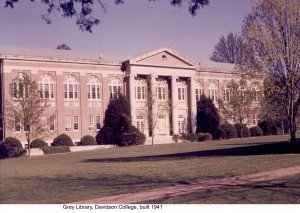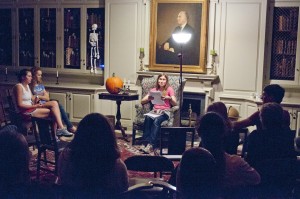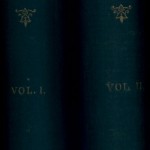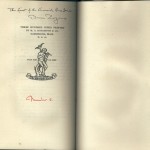Some people think that everything that happens in a library is strictly planned and ordered. That’s what librarians and archivists do. They gather, organize, arrange, describe…all planned out and orderly.
Not always! One of the words that often comes up is “serendipity.” The dictionary definition is:
noun: serendipity; plural noun: serendipities: The occurrence and development of events by chance in a happy or beneficial way.
That plays out in many ways, and often, several times a week. Just recently, department members of ASCC (Archives, Special Collections and Community) had prepared a class libguide on 19th century Davidson buildings. As we looked for photos of the original Chambers building, one of the names which came up was Alexander Jackson Davis, an architect who had worked on the building. The following week as I was looking for something else in our Archives Storage area, I came upon a box with a note taped to the top which read:
Miss Shore, These are Photostats of the original architectural plans for old Chambers building (completed 1860) – the architect was the famous Alexander Jackson Davis of New York & these are his drawings (the Frank Lloyd Wright of his day). These copies cost us $50 – I hope we can find a tray for them in the map stand. Many thanks. C.G.D.” The original is in the vault.

Last week I got a catalogue from a rare book dealer which included a prospectus for two books of poetry by A.R. Ammons, a North Carolina poet from Whiteville. Thanks to a retired Davidson English professor, Dr. Elizabeth Mills, we have several books of his in the Rare Book Room, including the two described in the prospectus. How lucky to find this item to add to the Rare Book Room collection. (Not lucky. Just serendipity again.)
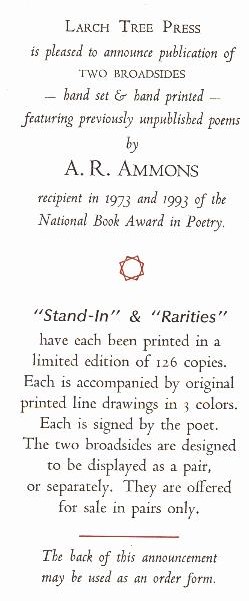
About two weeks ago, an outside researcher sent a request to Archives for information on Presbyterian religious studies and worship at Davidson. Luckily, since we are currently unable to have outside visitors, Jessica Cottle had just sent a list of many of our digitized resources to a student researching in the same area. Click. Sent the list to the researcher. Serendipity strikes again.
And, last week, we were talking with Meggie Lasher about a possible “nature walk” through Davidson’s arboretum. We told her about the resources we had about the arboretum, including a map. Almost immediately after the meeting we had a request from a professor about the arboretum. No problem. The materials were already at hand.
We do have a saying in the department that “things come in threes.” Wonder which of these things we’ll be asked about again soon?




